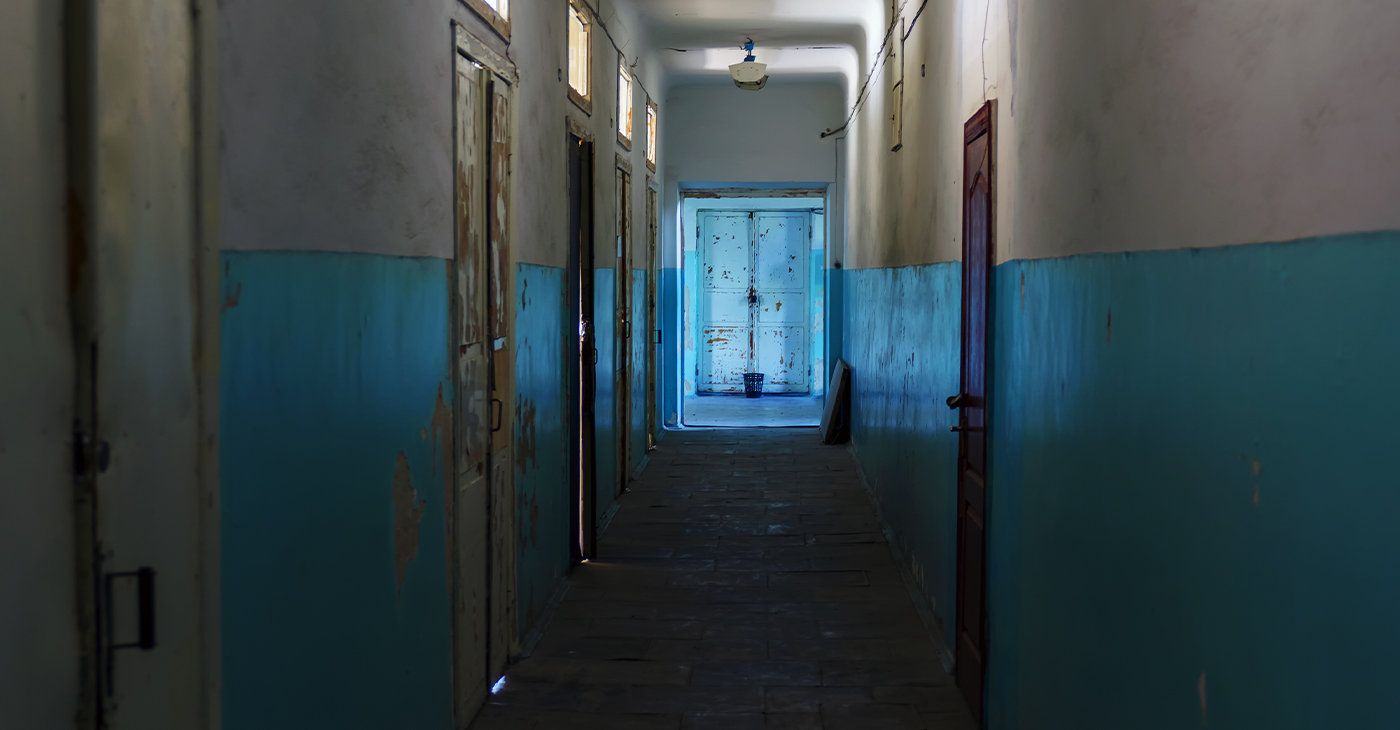City Government
Hospital Closures, Cuts in Services Loom for Some Communities. How the State May Step in to Help.
Five months after declaring a fiscal emergency and predicting that they’d run out of funds by early this year, officials at San Benito County’s only hospital said they have secured enough cash to get through the summer. At least for now, residents there won’t lose their local hospital.

By Ana B. Ibarra
CalMatters
Five months after declaring a fiscal emergency and predicting that they’d run out of funds by early this year, officials at San Benito County’s only hospital said they have secured enough cash to get through the summer. At least for now, residents there won’t lose their local hospital.
But a short-term infusion of cash only buys Hazel Hawkins Memorial Hospital a little time. The end goal, hospital administrators say, is to find a buyer that will take over and not only keep the hospital solvent but, ideally, expand services in the area.
Hazel Hawkins, in Hollister, is one of a handful of hospitals statewide facing financial troubles. While some of these hospitals have encountered financial difficulties in the past, the closure of Madera Community Hospital, which shut down completely at the start of this year and filed for bankruptcy in March, has prompted a new cry for help. Now a group of legislators are brainstorming ways to support struggling hospitals and keep them from shutting down or cutting services.
Legislative proposals on the table include a bill that would offer emergency loans for hospitals facing closure or those trying to reopen. A second bill involves Medi-Cal, the health insurance program for low-income people. It proposes funneling more money to hospitals by boosting Medi-Cal payments to providers by reinstating a tax on health insurance plans.
In California, six rural hospitals are at heightened risk of closing, according to the Center for Healthcare Quality and Payment Reform. The center does not release the names of at-risk hospitals because a hospital’s situation can change quicker than data may reflect, said Harold Miller, the center’s president. The California Hospital Association said a few hospitals in metro areas are also struggling, but the organization has not publicly named every hospital it deems at risk, noting that when a hospital announces its perilous financial situation it can prematurely begin to lose workers and patients.
Among hospitals that have publicly talked about their troubles or attributed reductions in services and staff to their finances: Hazel Hawkins and Mad River Community Hospital in Arcata have both suspended their home health services programs; Kaweah Health Medical Center in Visalia has laid off at least 130 employees; El Centro Regional Medical Center in Imperial County cut its maternity ward, forcing local families to travel about 25 minutes to the only other hospital in the county.
Most recently, in mid-March, Beverly Hospital, a 202-bed hospital in Montebello, said that in June it will suspend its maternity, pediatric and outpatient radiology services. In a January letter to the state attorney general, the hospital noted its “dire financial circumstances” and said it would be canceling its plans to affiliate with the health care system Adventist Health because “Beverly Hospital does not have the resources to remain operational during the pendency of the attorney general review.” Under state law, the attorney general must approve the sale of nonprofit hospitals.
The California Hospital Association is asking for $1.5 billion from the state for struggling hospitals, and its request is being supported by a bipartisan group of lawmakers. But even supporters acknowledge this is a challenging request when the state is projecting a budget deficit.
Health economists interviewed by CalMatters said state help should be targeted so that any financial aid goes to hospitals in actual need.
“Most of the hospitals in California are in big systems and those systems have financial resources to get their members through. But there are a few that genuinely appear to be at risk if this cost surge continues,” said Glenn Melnick, a health economist at the University of Southern California. “The question is: Does the government want to have a facility that could get them (hospitals) through this rough patch? What you don’t want is to hand out a billion and half dollars to hospitals that may not need it.”
Providing aid to hospitals in trouble is warranted and different from helping other types of businesses because the goal is to protect patients, said Chris Whaley, a health economist with RAND Corp., a think tank.
“When businesses go out of business, even if it is no fault of their own, we accept that as part of capitalism, but in health care, if a hospital goes out of business that usually means a vulnerable patient population has lost access to care,” he said.
Saving Hollister’s hospital
Hospitals have largely blamed the pandemic for their financial troubles. They’re still recovering from increased expenses related to labor, drugs, and medical supplies needed to respond to COVID-19. Struggling hospitals that have spoken about their circumstances have a couple of common threads: They are independent, meaning they don’t have the financial backing of a well-endowed health system, and at least a third of their patients are low-income and insured through Medi-Cal.
Some hospitals face additional pressures. For example, despite its increased expenses, Hazel Hawkins, a 25-bed hospital, posted earnings of $2.6 million in the fiscal year that ended in June of 2022, according to state financial documents. Then in July it learned that it was being overpaid by Medicare, the federal insurance program for seniors and people with disabilities, said Mary Casillas, Hazel Hawkins’ interim CEO. The hospital is now on the hook to repay more than $5 million to Medicare. That’s on top of a 20% decrease in its adjusted Medicare reimbursement, she said. By December, employees had received notices of a potential closure.
Earlier this year, the hospital secured a $3 million state loan, received an advancement in property tax dollars it receives from the county and has been working to reduce its operational costs. That, among other efforts, will help the hospital stay afloat at least until September and give it time to find a buyer, Casillas said. She said her hospital has been approached by at least 10 interested parties that are currently reviewing Hazel Hawkins’ situation.
“We have bankruptcy professionals, as well as financial advisors, who have been very helpful at helping us manage our cash flow,” Casillas said.
Legislators’ proposals
Assemblymember Esmeralda Soria, a Fresno Democrat whose district includes Madera and who is authoring legislation, said keeping hospitals open is not optional — people should have emergency care close to home.
“I think this issue is really important as the state continues to pursue expansion of coverage. This is a reminder that folks in my area may qualify for Medi-Cal, but what does that mean if they can’t access care?” Soria said.
Soria is authoring Assembly Bill 412, the legislation that would create an emergency loan program specifically for hospitals that are facing closure or that have closed but have a plan to reopen. Currently, state loans are only available to operating public hospitals, but Soria wants to create an option that would aid the reopening of Madera Community Hospital. In the case of a closed facility, the loan would be made to a government entity looking to reopen its local hospital.
The legislation would require a budget allocation of $20 million, which would be added to funds already available through the state treasurer’s office. These additional loans would likely be a very small part of the puzzle. In Madera, county officials have estimated that it would cost about $55 million to reopen the hospital.
Long term, legislators are eyeing more ambitious ideas. For example, Soria said an ideal scenario would be for the University of California system to take over the defunct Madera hospital. The UC could run a medical residency program there, which would help attract more providers to the San Joaquin Valley.
“We’ve approached UC Merced,” Soria said, noting that those conversations are very new. “Is it a possibility to dream big and have the UC take it over? I think there are opportunities like this, and we have to think outside the box.”
Meanwhile, Sen. Anna Caballero, a Merced Democrat, has introduced Senate Bill 870, which calls for the state to renew a tax on managed care organizations that expired last year, and use some of those funds to increase payments to hospitals and other providers. Higher payment could provide some relief to hospitals that serve a large low-income patient population, Caballero said.
Medi-Cal rates, providers argue, have not kept up with growing costs. The California Hospital Association estimates the state pays hospitals 74 cents for every dollar spent on a Medi-Cal patient. Experts point out that hospitals also receive “supplemental payments,” which include payments to hospitals that serve a disproportionate share of Medi-Cal patients and compensation for care provided to uninsured people. In 2021, California hospitals altogether received about $9.2 billion in these supplemental payments, according to the Medicaid and Children’s Health Insurance Program Payment and Access Commission.
In an email, the hospital association said supplemental payments do not make up for the shortfalls in base pay. “The structural funding problem is the result of base payment rates that haven’t increased in over a decade, despite massive inflationary growth,” said David Simon, a spokesperson for the association.
Gov. Gavin Newsom also called for the reinstatement of the tax on managed care organizations in his January budget draft. His proposal points more toward sustainability and offsetting any potential cuts in Medi-Cal, rather than expanding service levels and provider payments. Typically, revenue from that tax allows the state to save general fund spending on Medi-Cal. If reinstated, revenue from this tax could save the state’s general fund up to $2 billion a year, according to the Legislative Analyst’s Office.
Caballero said that providing aid to hospitals should come with some scrutiny. Part of what legislators are working on in these proposals is the criteria hospitals will have to meet in order to be eligible for state resources, she said. One idea is to send a team of experts that analyzes each hospital’s situation, and if part of the problem is mismanagement, then there would have to be changes in the hospital’s leadership as a condition to receive help, she said.
The Republican Senate caucus, led by Sen. Brian Jones, a San Diego Republican, is taking a different approach and pegging its legislation, Senate Bill 774, to the state attorney general’s authority over hospital transactions. By state law, the attorney general has to review and approve mergers that include a nonprofit hospital as a way to examine a buyer’s market power and ensure protections for patients.
Trinity Health, a nonprofit Catholic health care system, was set to purchase Madera Community Hospital but pulled out of the deal, blaming conditions imposed by Attorney General Rob Bonta. Jones’ bill seeks to prohibit the attorney general from requiring certain conditions, like restricting the buyer from negotiating new contracts and rates with payers.
Assembly Bill 869, by Assemblymember Jim Wood, a Democrat from Healdsburg, would benefit small and rural hospitals by providing relief in a different way. This bill would provide grants for seismic retrofitting to financially distressed hospitals and allow them more time to meet the state’s 2030 seismic standards. The requirements, which have been delayed in the past, have been a point of contention. State law requires that hospitals upgrade their buildings so that they are functional after an earthquake, but hospital leaders say they can’t afford the expensive upgrades, especially in their current financial situation.
“The bill is a targeted approach to preserve a small number of hospitals that are most often a community’s only access to emergency care,” Wood said during a recent Assembly Health Committee hearing, “and will certainly close if some relief is not provided.”
Activism
Barbara Lee Accepts Victory With “Responsibility, Humility and Love”
“I accept your choice with a deep sense of responsibility, humility, and love. Oakland is a deeply divided City,” Lee said in an April 19 statement. “I answered the call to run to unite our community, so that I can represent every voter, and we can all work together as One Oakland to solve our most pressing problems.”

By Antonio Ray Harvey,
California Black Media
As a candidate for mayor, former U.S. Representative Barbara Lee released a “10-point plan” last week to reassure residents that she will tackle Oakland’s most pressing challenges.
Now that she has edged out her competitors in the ranked-choice special election with 50% or more of the vote, the former Congresswoman, who represented parts of the Bay Area in the U.S. House of Representatives, can put her vision in motion as the city’s first Black woman mayor.
“I accept your choice with a deep sense of responsibility, humility, and love. Oakland is a deeply divided City,” Lee said in an April 19 statement. “I answered the call to run to unite our community, so that I can represent every voter, and we can all work together as One Oakland to solve our most pressing problems.”
On Saturday evening, Taylor conceded to Lee. There are still about 300 Vote-by-Mail ballots left to be verified, according to county election officials. The ballots will be processed on April 21 and April 22.
“This morning, I called Congresswoman Barbara Lee to congratulate her on becoming the next Mayor of Oakland,” Taylor said in a statement.
“I pray that Mayor-Elect Lee fulfills her commitment to unify Oakland by authentically engaging the 47% of Oaklanders who voted for me and who want pragmatic, results-driven leadership.”
The influential Oakland Post endorsed Lee’s campaign, commending her leadership on the local, state, and federal levels.
Paul Cobb, The Post’s publisher, told California Black Media that Lee will bring back “respect and accountability” to the mayor’s office.
“She is going to be a collegial leader drawing on the advice of community nonprofit organizations and those who have experience in dealing with various issues,” Cobb said. “She’s going to try to do a consensus-building thing among those who know the present problems that face the city.”
Born in El Paso, Texas, Lee’s family moved to California while she was in high school. At 20 years old, Lee divorced her husband after the birth of her first child. After the split, Lee went through a tough period, becoming homeless and having to apply for public assistance to make ends meet.
But destitution did not deter the young woman.
Lee groomed herself to become an activist and advocate in Oakland and committed to standing up for the most vulnerable citizens in her community.
Lee traveled to Washington, D.C. to work for then U.S. Congressman Ron Dellums after receiving a Bachelor of Arts degree from Mills College in Oakland in 1973. Lee later won a U.S. Department of Housing and Urban Development (HUD) fellowship to attend the School of Social Welfare, and she earned a Master of Social Work from the University of California-Berkeley in 1975.
Lee later served in the California State Assembly and State Senate before she was elected to Congress in 1998.
After serving in the U.S. Congress for more than 25 years, Lee ran unsuccessfully for California’s U.S. Senate in the 2024 primary election.
Lee joins current Los Angeles mayor Karen Bass and former San Francisco Mayor London Breed as Black women serving as chief executives of major cities in California over the last few years.
Activism
Teachers’ Union Thanks Supt. Johnson-Trammell for Service to Schools and Community
“I speak for our Oakland community and the families OEA serves in thanking Supt. Johnson-Trammell for her service. With public schools and immigrant families under attack nationally from Trump and with budget challenges affecting many California school districts, these are tough times demanding the best of what we all have to offer,” said OEA President Kampala Taiz-Rancifer in a statement released Thursday.

The union calls for a community-involvement in search for new superintendent
By Post Staff
While pointing out that Supt. Kayla Johnson-Trammell has been planning to resign for a while, the Oakland Education Association (OEA) thanked her for years of service to the schools and called for community involvement in the search for a new superintendent.
“I speak for our Oakland community and the families OEA serves in thanking Supt. Johnson-Trammell for her service. With public schools and immigrant families under attack nationally from Trump and with budget challenges affecting many California school districts, these are tough times demanding the best of what we all have to offer,” said OEA President Kampala Taiz-Rancifer in a statement released Thursday.
“While we disagreed strongly on a number of issues,” said Taiz-Rancifer, “Dr. Johnson-Trammell is a daughter of Oakland and a product of our public schools. We thank her for her service and wish her the best moving forward.”
She said the schools’ community was aware that the superintendent had been planning to leave well before this week’s announcement.
“The superintendent has spoken publicly throughout the year about her planned departure. In August 2024, the previous school board approved a renewed contract raising her compensation to over $600,000 per year and allowing her to step back from daily responsibilities beginning in the 2025-2026 school year,” said Taiz-Rancifer.
She said the teachers’ union has been raising concerns about the need for stability and financial transparency in the district. “For three of the last four years, the district projected major deficits, only to end with millions in reserve.” This year, she said, the district added $90 million to central office overhead expenses.
“Just last month, a majority of school board directors took action to cap expensive consultant costs and develop alternative budget proposals that align spending with community priorities to keep funding in classrooms,” she said.
Taiz-Rancifer said the union stands behind the leadership of Board President Jennifer Brouhard and Boardmembers Valarie Bachelor, Rachel Latta, and VanCedric Williams.
Alameda County
OUSD Supt. Chief Kyla Johnson-Trammell to Step Down on July 1
The district’s progress under Johnson-Trammell’s leadership “provides a strong foundation for the transition and work ahead,” according to the joint statement. “The plan has always prioritized a smooth and thoughtful transition. A formal search for a permanent superintendent was (originally) scheduled to begin in fall 2025,” but now the board is “initiating this process focusing on transparency and deep community involvement.”

By Post Staff
The Oakland Unified School District announced this week that Supt. Kyla Johnson-Trammell will leave her position on July 1 after serving for eight years.
In closed session on Wednesday evening, the school board approved a voluntary separation agreement by a 4-3 vote, said Board President Jennifer Brouhard.
The board will begin searching immediately for an interim superintendent who will start on July 1. Johnson-Trammell will continue as superintendent emeritus from July 1 to Jan. 15, 2026, to help with the transition, according to a joint statement released by Johnson-Trammell and the Board.
In a personal statement to the community, Johnson-Trammell said:
“As I prepare to step away from my role as your superintendent on June 30, I do so with immense pride in what we’ve accomplished together. The last eight years have brought some of the most challenging — and most defining — moments in our district’s history. Through it all, Oakland has shown what’s possible when we stay grounded in our mission and vision and work in partnership for our students.”
The joint statement from Johnson-Trammell and the Board modifies her existing contract. According to the joint statement: “in August 2024, the OUSD Board of Education approved a three-year transitional contract for Superintendent Johnson-Trammell, with the next school year (2025-2026) allowing for a shift in responsibilities to support the transition to a permanent superintendent at the start of the 2026-2027 school year.”
Praising Johnson-Trammell’s accomplishments, the joint statement said, “(She) has done an extraordinary job over the past eight years, a historic tenure marked by stability, strong fiscal oversight, and improvements in student achievement.”
According to the statement, her achievements include:
- increased graduation rates
- improved literacy
- increased student attendance rates,
- “exemplary” COVID pandemic leadership,
- “historic” pay raises to educators,
- Improvement in OUSD’s facilities bond program,
- ensuring strong fiscal systems and budgeting
The district’s progress under Johnson-Trammell’s leadership “provides a strong foundation for the transition and work ahead,” according to the joint statement. “The plan has always prioritized a smooth and thoughtful transition. A formal search for a permanent superintendent was (originally) scheduled to begin in fall 2025,” but now the board is “initiating this process focusing on transparency and deep community involvement.”
As Johnson-Trammell’s years of service are coming to an end, there remain significant unresolved challenges facing the district, including a $95 million budget deficit and the threat of school closings and employee layoffs, as well as contract negotiations with the Oakland Education Association (OEA), the teachers’ union.
Another ongoing controversy has been the superintendent’s extremely high salary, which was negotiated less than a year ago under the leadership of Boardmember Mike Hutchinson and former Boardmember Sam Davis.
Johnson-Trammell is one of the highest-paid superintendents in California and the country, earning a total compensation package of $637,036.42 a year.
The contract had granted her a pay raise and a final three-year contract extension through the 2027 school year.
Under that contract, she would only continue as superintendent during the current school year, and then for two additional years she would work on research projects and prepare the district for a new superintendent, at the same rate of pay she now earns, plus raises.
During those two years, a temporary superintendent would be hired to handle the responsibilities of running the school district.
-

 Activism4 weeks ago
Activism4 weeks agoOakland Post Endorses Barbara Lee
-

 Activism3 weeks ago
Activism3 weeks agoOakland Post: Week of April 2 – 8, 2025
-

 #NNPA BlackPress3 weeks ago
#NNPA BlackPress3 weeks agoTrump Profits, Black America Pays the Price
-

 Activism2 weeks ago
Activism2 weeks agoOakland Post: Week of April 9 – 15, 2025
-

 #NNPA BlackPress3 weeks ago
#NNPA BlackPress3 weeks agoHarriet Tubman Scrubbed; DEI Dismantled
-

 #NNPA BlackPress3 weeks ago
#NNPA BlackPress3 weeks agoTrump Targets a Slavery Removal from the National Museum of African-American History and Culture
-

 #NNPA BlackPress3 weeks ago
#NNPA BlackPress3 weeks agoLawmakers Greenlight Reparations Study for Descendants of Enslaved Marylanders
-

 #NNPA BlackPress3 weeks ago
#NNPA BlackPress3 weeks agoNew York Stands Firm Against Trump Administration’s Order to Abandon Diversity in Schools























































